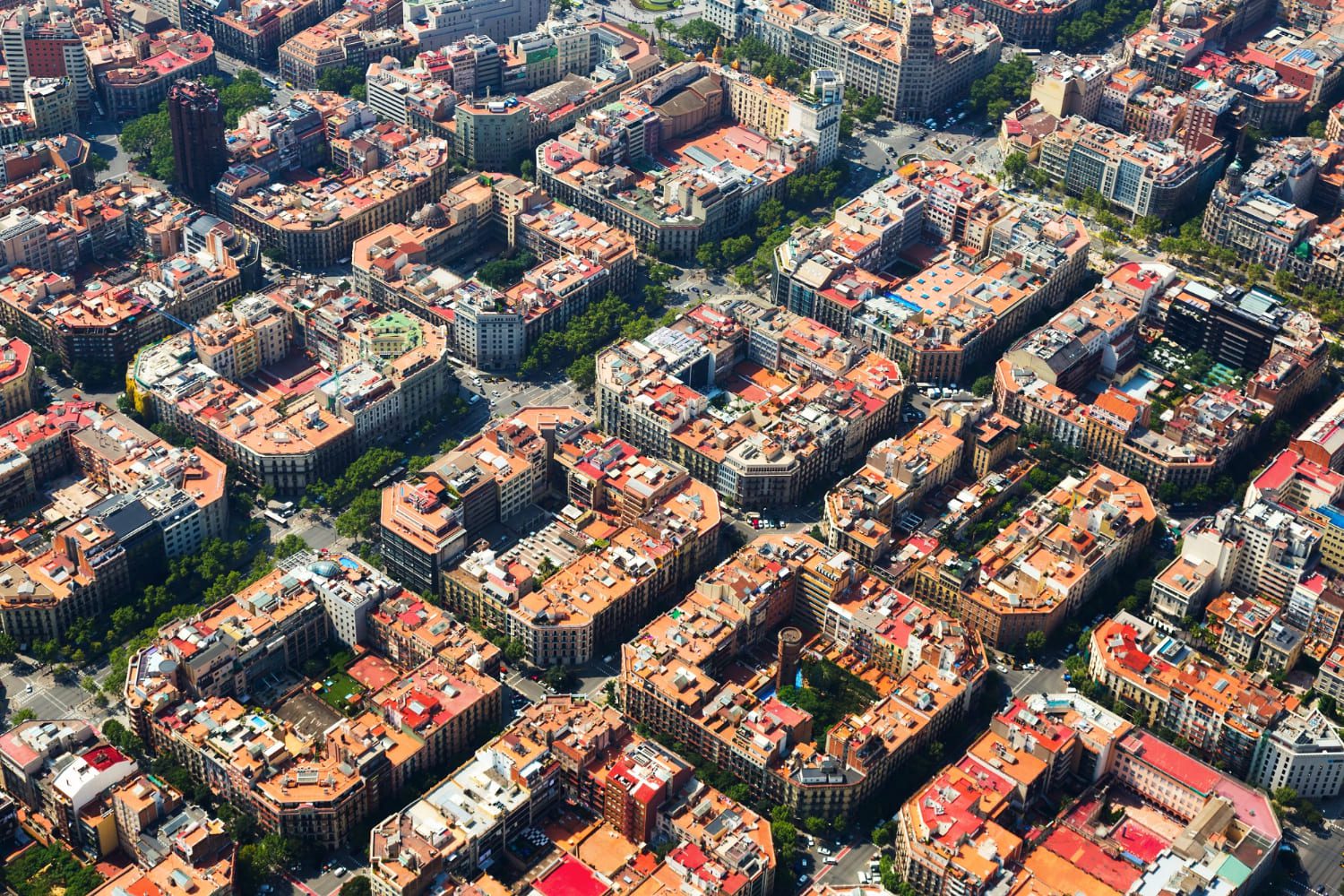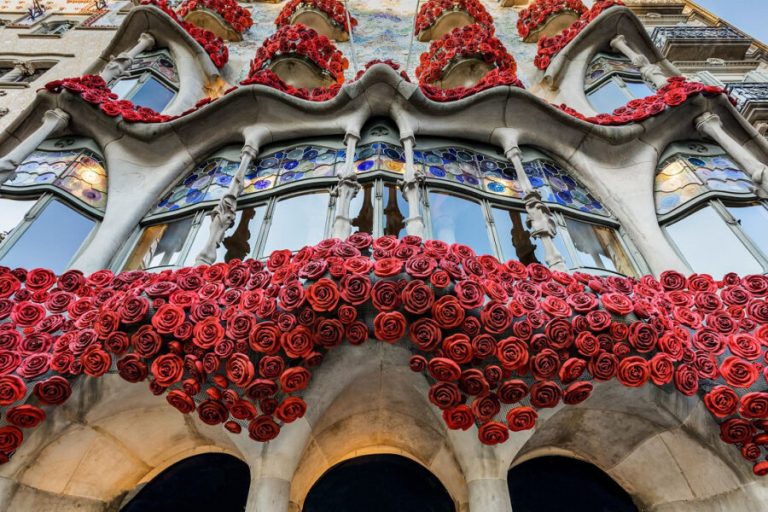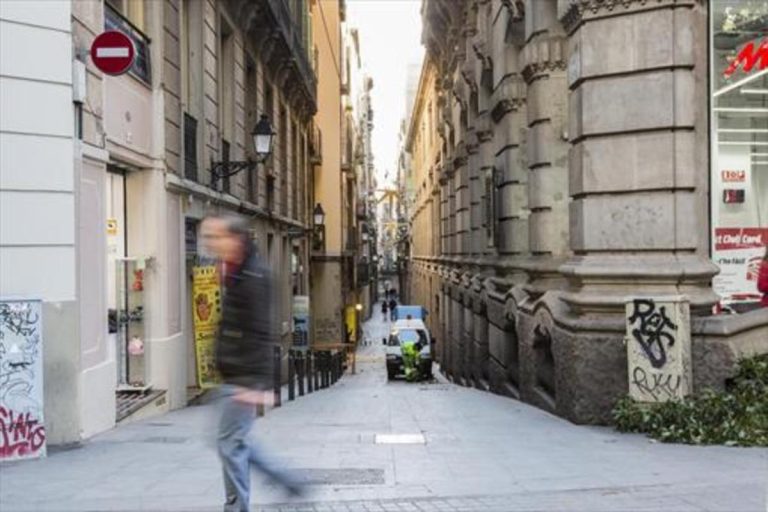The Birth of Eixample: Modern Barcelona
When you walk through the Eixample today—those wide, grid-like streets full of life—it might seem natural, as if it had always been there. But the truth is that the birth of Eixample was a revolutionary process that transformed Barcelona forever.
Today we’ll tell you how this neighborhood came about, who was its great promoter, and why it remains a symbol of modern Barcelona.
What was Barcelona like before Eixample?
Before the mid-19th century, Barcelona was enclosed within medieval walls.
Imagine a densely populated city, with narrow streets, lack of hygiene, health problems, and an overflowing population growth due to the Industrial Revolution.
The walls, which once protected, had become a prison that prevented the necessary expansion for a city in full economic boom.
Fun fact:
👉 In 1854, after years of citizen and political pressure, the walls were finally torn down, paving the way for a new Barcelona.
What does “Eixample” mean?
“Eixample” means “expansion” in Catalan.
It is, literally, the space that was added to allow the city to grow outwards, absorbing former municipalities such as Gràcia, Sants, or Sant Martí.
But it wasn’t just about extending the city: they wanted to do it in a rational, healthy, and modern way.
Ildefons Cerdà: The Visionary Behind Eixample
The great architect of Eixample was the engineer Ildefons Cerdà.
In 1859, Cerdà presented his Barcelona Expansion Plan, which completely broke with the medieval structure:
- Wide and straight streets, designed for air circulation and sunlight.
- Square blocks with chamfered corners to improve visibility and circulation of carts (and later, cars).
- Green spaces within each block (although over time, many interior courtyards were occupied by constructions).
- Equitable distribution of basic services (schools, markets, hospitals) to democratize quality of life.
Cerdà envisioned a city for everyone, not just the elite.
He was an urban planner ahead of his time.
How was Eixample built?
Although Cerdà’s original plan was ambitious, its practical application had modifications:
- The economic interests of landowners led to denser construction than originally planned.
- The green spaces within the blocks, intended for community gardens, were privatized in many cases.
- Even so, the general layout and spirit of the project were respected, and Eixample grew in an orderly manner.
Between the late 19th and early 20th centuries, Eixample became the heart of the new bourgeois Barcelona, driving movements such as Modernisme.
Eixample and Modernisme: An Inseparable Pair
Eixample not only brought urban modernity: it was also the canvas on which artists like Gaudí, Domènech i Montaner, or Puig i Cadafalch expressed their creative genius.
Some Modernist landmarks that were born in Eixample:
- Casa Batlló and La Pedrera by Gaudí.
- Casa Amatller by Puig i Cadafalch.
- Casa Lleó Morera by Domènech i Montaner.
The Passeig de Gràcia, today one of the most elegant avenues in Europe, was the central axis where the new bourgeoisie wanted to showcase their power… and their good taste.
Curiosities of Eixample
- Unique chamfers: Each cut-off corner facilitated the turning of trams and visibility at intersections.
- Open blocks: In the original plan, each block was to be built on only two sides, leaving space for gardens and ventilation.
- Advanced sustainability: Cerdà was already thinking about issues such as waste collection, traffic separation, and natural ventilation, concepts that are still urban trends today.
Eixample Today: The Living Heart of Barcelona
Today, Eixample is not just a neighborhood: it is the soul of modern Barcelona.
- It houses the main architectural jewels of the city.
- It is one of the most commercially dynamic districts.
- Its design continues to serve as a model for urban planning worldwide.
- Recent initiatives such as Superilles (Superblocks) seek to recover part of Cerdà’s original spirit: more human-friendly streets, with fewer cars and more space for people.
The Eixample: A City Dream That Keeps Growing
The birth of the Eixample was not just a physical expansion: it was a revolution of ideas.
It was the brave bet of those who dreamed of a better city for all.
And even today, when we walk through its orderly streets, its hidden courtyards, and its facades full of art, we feel that this dream is still very much alive.
Barcelona would not be the same without the Eixample. And, perhaps, neither would we.






